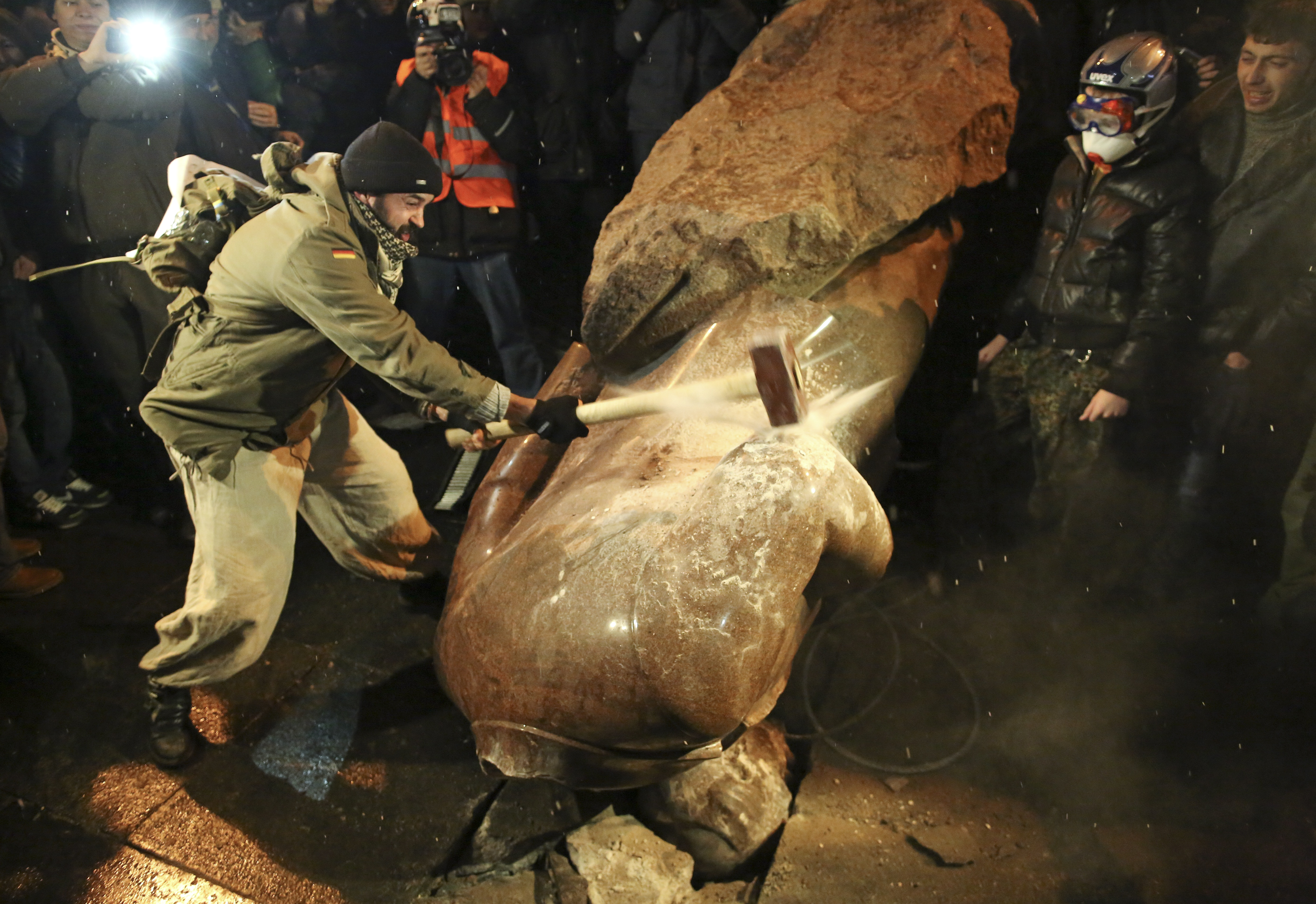Yanukovych, Viktor Fedorovych (1950-…), was president of Ukraine from 2010 to 2014. His presidency followed a period in which Ukraine’s government worked to establish ties with the European Union (EU) at the expense of the country’s links to neighboring Russia. As president, Yanukovych worked to repair ties with Russia. In late 2013, Yanukovych refused to sign a trade deal with the EU. The refusal sparked months of protests throughout Ukraine. Yanukovych was removed from office in February 2014.

Early life and career.
Yanukovych was born in Yenakiieve, Ukraine, on July 9, 1950. At that time, Ukraine was part of the Union of Soviet Socialist Republics (U.S.S.R.). In 1980, Yanukovych graduated from Donetsk Polytechnic Institute (now Donetsk State Technical University) with a degree in mechanical engineering. After graduating, he managed a transportation company.
Ukraine gained independence in 1991 after the breakup of the Soviet Union. In 1997, Yanukovych was named governor of Ukraine’s eastern Donetsk region. In 2002, Ukrainian President Leonid Kuchma appointed Yanukovych to serve as prime minister. Yanukovych held that office until 2005.
The Orange Revolution.
In 2004, Yanukovych ran for president of Ukraine. He represented the pro-Russia Party of Regions. Yanukovych’s main rival, Viktor Yushchenko, favored greater integration with the European Union.
The first round of elections, held in October, produced no clear winner. A runoff was held on November 21. Ukraine’s Central Election Commission declared Yanukovych the winner, but international observers reported widespread election fraud. Yushchenko’s supporters protested the results throughout Ukraine’s largest cities. In December, Ukraine’s Supreme Court annulled (canceled) the results of the runoff election. A new runoff was held on December 26, and Yushchenko was declared the winner. He took office in January 2005.
The peaceful demonstrations by Yushchenko’s supporters became known as the Orange Revolution. Orange was the campaign color of Yushchenko’s party.
Following parliamentary elections in 2006, the Party of Regions formed a ruling coalition (partnership), and Yanukovych again became prime minister. Yanukovych and Yushchenko clashed almost immediately, and new parliamentary elections were held in 2007. Yushchenko’s Orange Revolution ally Yulia Tymoshenko then became prime minister.
The presidency.
New presidential elections were held in early 2010. Yanukovych won a February 7 runoff against Tymoshenko, and he was sworn in as president on February 25. In October, Ukraine’s Constitutional Court reversed an amendment passed in 2004 that had transferred some of the president’s powers to parliament. The 2010 ruling gave the president the right to choose all the Cabinet members as well as the prime minister.
Yanukovych’s administration accused Tymoshenko of abuse of power during her time as prime minister. She was found guilty in 2011 and sentenced to seven years in prison. Many observers felt that her trial and conviction were politically motivated. Still, Yanukovych refused calls for her release.
In November 2013, Yanukovych suspended plans to sign a long-negotiated trade agreement with the EU. A key sticking point in the negotiations was the EU’s call for Tymoshenko’s release from prison. Some observers felt Yanukovych’s actions were greatly influenced by Russia, as Russia’s government had threatened to impose new trade restrictions on Ukraine if it joined the EU. Russia urged Ukraine to instead join a Russian-led customs union and offered financial assistance.
Protests and overthrow.
Yanukovych’s decision to withdraw from the EU agreement led to large-scale protests in Kyiv, Ukraine’s capital. The protests later spread throughout western Ukraine. Protesters called for Yanukovych to step down and call new elections. They also demanded the government overturn the 2010 constitutional changes. Many people in eastern Ukraine continued to support Yanukovych.
The protests continued into early 2014. In Kyiv, protesters established a camp in the city’s Independence Square. Confrontations between protesters and government forces turned violent, and observers estimated that at least 80 people were killed in February. Many of the dead were anti-Yanukovych protesters, but police officers also were killed.
On February 21, Yanukovych met with opposition leaders and agreed to hold new elections. Later that day, parliament voted to roll back the 2010 constitutional changes and to release Tymoshenko from prison.
Yanukovych fled Kyiv later on February 21, accusing the opposition protesters of staging a coup d’état. Opposition politicians formed an interim (temporary) government. On February 22, the interim parliament voted to remove Yanukovych from the presidency. The new government issued an arrest warrant for Yanukovych, charging him with mass murder over the deaths of the protesters.
After Yanukovych fled, Russian forces seized control of the Crimean Peninsula, which juts into the Black Sea from southern Ukraine. Crimea’s government then voted to withdraw from Ukraine. Shortly afterwards, Russian President Vladimir Putin signed legislation annexing (claiming control of) Crimea. In regions of eastern Ukraine bordering on Russia, separatists gained control of several cities. In May, the separatists voted in favor of increased self-rule. The Ukrainian government and its allies considered these moves illegal.
In 2019, Yanukovych was convicted of treason and other charges in absentia (while absent) for his efforts to crush the 2014 protests. He was sentenced to 13 years in prison. However, Yanukovych has lived in exile in Russia since 2014 and is unlikely to return to Ukraine.
See also Kuchma, Leonid Danylovich; Ukraine; Yushchenko, Viktor Andriyovich.
